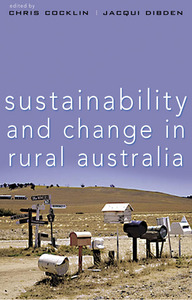Natural capital and the sustainability of rural communities
Cocklin, Chris (2005) Natural capital and the sustainability of rural communities. In: Cocklin, Chris, and Dibden, Jacqui, (eds.) Sustainability and Change in Rural Australia. University of New South Wales Press, Sydney, NSW, Australia, pp. 171-191.
![[img]](https://researchonline.jcu.edu.au/19816/2.hassmallThumbnailVersion/19816_Cocklin_2005_book_cover.jpg)
|
Image (JPEG) (Book Cover)
- Cover Image
Download (114kB) |
|
|
PDF (Published Version)
- Published Version
Restricted to Repository staff only |
Abstract
In a controversial article in Nature, Costanza et al. (1997) estimated the monetary value of the world's 'ecosystem services and natural capital' to have an average annual value of $33 trillion. Irrespective of the validity of the calculations,l the importance of the article resides in the fact that it drew widespread attention to the immense material value of the natural environment; indeed, the estimate is far greater than the sum of all the world's gross national products. From around that time, the notion of 'natural capital' has gained substantial currency, particularly in the context of discussions about sustainability.
According to Berkes and Folke (1993; see also Pretty, 1999; van del' Perk & de Groot, 2000), natural capital has three components:
• the non-renewable resources that are extracted from ecosystems
• renewable resources, which are produced and maintained by ecosystem processes
• environmental services - such as the climate, soil formation, nutrient cycling, waste assimilation - the products of ecosystem functioning
For rural commodity producers, the perennially difficult act of balance is to at once draw upon natural capital and ecosystem services, while at the same time being good stewards of the environment, thereby ensuring that their farms are sustainable - ecologically and economically. In many cases, this balance has simply not been achieved and the result has been environmental degradation. This ultimately has implications for the sustainability of individual farms, but also for the rural communties of which they are a part.



